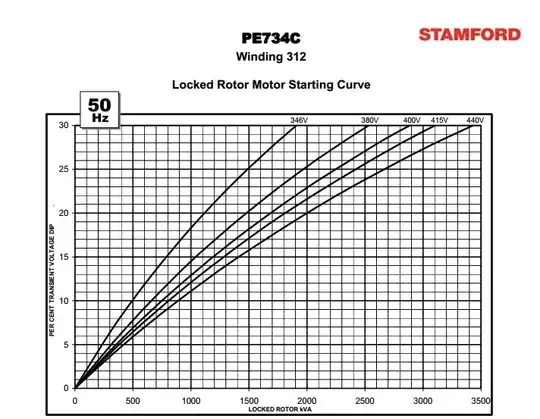The power systems analysis software packages I have used allow two ways to model the electricity supply to your network.
As a "utility element" or "grid element" - a voltage source behind a Thevenin equivalent impedance. This is assumed to be a "large" grid with infinite inertia.
As a generator element, with specified electrical parameters like rated kVA, direct/quadrature-axis subtransient, transient and steady-state reactances.
The impedances are enough for basic load-flow/short circuit calculations. For dynamic/transient studies, the mechanical parameters such as moment of inertia, AVR/exciter control system, governor model, must also be specified.
As you have described it, Paladin DesignBase appears to use some strange hybrid of these approaches. It's not quite an "ideal utility element" (voltage behind a source), nor is it a detailed generator element with full electrical, mechanical, and control modelling.
At a guess, the correct answer to what you actually want to do, "can I start a large motor on this weak grid?", depends on the particulars of your supply.
Is the grid "weak" in the sense of being run from a local generator set?
I.e. the site is being run off a portable generator-set. If this is the case, then the motor starting capability of the generator-set will be published on the alternator's data sheet. Usually this is expressed as a 'Motor starting kVA'. See below example from Stamford (Cummins) PE734C datasheet.

Is the grid "weak" in the sense of being connected to the national power grid, but at the end of a very long and skinny transmission line?
That is, the inertia of the system is practically infinite, but the short-circuit capacity is low due to the high impedance of the feeder line.
If this is the case, the motor starting time is irrelevant so long as you meet any technical rules imposed on you by the distribution network operator. In Australia this is usually a limit on voltage dip.
In both cases, the motor starting will only succeed if the motor terminal voltage is high enough to produce sufficient starting torque. If the motor terminal voltage is above 80% at motor starting, you are probably OK. If the motor terminal voltage is less than 70% at the max inrush current, there's a good chance your motor will stall. This would warrant closer examination of the motor torque/speed curve, load torque/speed curve, and motor thermal withstand curves.
Remember that torque is proportional to the square of voltage, so 70% voltage = 50% torque, and that excessively long start times may cause overheating of the motor windings.
The correct answer to the question as asked, "how do I model a weak grid?", is to fully model the generator(s). That means you need to model:
- The electrical characteristics of the alternator.
- The mechanical properties of the generator set.
- The alternator AVR/Exciter block diagram and parameters.
- The engine governor block diagram and parameters.
This information is only published for reasonably large units, i.e. 40MW aeroderivative gas turbine generators. For small portable generator-sets (1MW) you are expected to use the "motor starting kVA" data in the datasheet.
